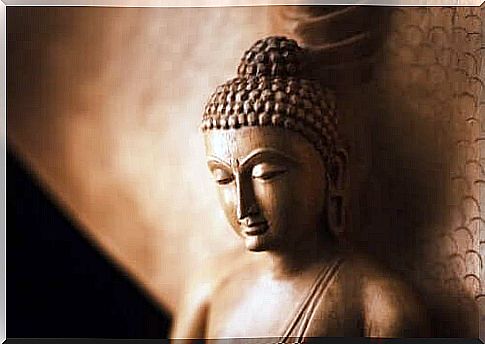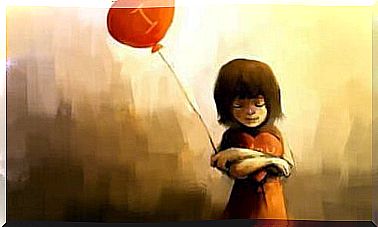The Buddhist Story Of Patience And Mental Peace

Sometimes action is not the best option, especially if they are the fruit of an impulse. It is crucial to know how to wait and have patience. Buddhist history tells us just that.
We have a bad habit of wanting almost everything instantly, and doing things right away. We prefer to change our decisions rather than have patience. It is more common for people to give up than to make some effort. But this Buddhist story will teach you the importance of patience to achieve mental peace.
It usually irritates us to procrastinate to satisfy our desires and to have to wait. When we think we’ll have to wait, our minds actually start bombarding us with worries and expectations. It does this especially to try to speed up the time you need to spend waiting.
That is why we live a fast life with many internal and external distractions. We wander from one place to another with no other direction than the one leading to our instant gratification.
Too many worries make us impatient
Furthermore, we need to listen to the noise of our inner voice because our worries tend to be present in everything we do. It’s like we’ve been addicted to it somehow. We love to think, create hypotheses, and get caught up in the labyrinths and vicious circles of our faith.
But perhaps we are ignoring the most important thing: How to get out of these self-imposed traps. How do we free ourselves from mental traps? Perhaps the following Buddhist story gives us the answer.

The Buddhist history
The Buddha and his disciples decided to make a journey where they would cross different territories and cities. One day they saw a lake in the distance. They decided to stop there as they were thirsty. When they arrived, the Buddha said to his youngest and most impatient disciple, “I am thirsty. Can you give me some water from that lake? ”.
The disciple took over to the lake, but when he arrived he noticed that a cart with oxen was crossing the lake. Little by little the water became muddy. When that happened, the disciple thought, “I can not give this muddy water to my teacher.” Thus he went back and told the Buddha, “The water is very muddy, and I do not think we can drink it.”
About half an hour later, the Buddha asked the disciple to go back to the lake, and bring him some water to drink. However, the water was still dirty. When he returned, he said to the Buddha, “We can not drink that water. We should go to the city to get something to drink ”.
The Buddha did not answer him. But he did not move either. He just stayed in the same place. After a while , the Buddha asked the disciple again to go back to the lake and bring him water. When he would not challenge his master, he went to the lake.
But he was furious because he did not understand why he had asked him to go back again. Since the water was muddy, they could not drink it.
Time is the key in Buddhist history
When he arrived, he saw that the water now looked crystal clear. Thus he took something and gave it to the Buddha. He looked at the water and said to the disciple, “What have you done to purify the water?” The disciple did not understand the question. It was obvious he had done nothing.
The Buddha looked at him and explained, “You waited and let it be. The mud fell to the bottom by itself and now the water is clean. Your mind is like that too! Once it is muddy, leave it alone. Give it some time. Do not be impatient. On the contrary, be patient.
It will reach a balance on its own. You do not need to do anything to calm it down. Everything will pass by itself, as long as you do not hold on to it ”.
The art of patience to calm the mind
Patience is the key in this Buddhist story. It’s about the art of knowing how to wait, respecting time and taking a break when the situation demands it, especially when it comes to your thoughts. The more overwhelmed you find yourself, the more you actually have to stop thinking before the web of thoughts grows.

Doing nothing, giving things time and waiting are good opportunities to calm your agitated mind. In fact, Buddhists call a tongs that jump from thought to thought in an agitated way until you are exhausted and confused, a “monkey mind”.
If you get carried away by impatience, anger, stress or frustration, you will definitely end up making hasty decisions. Therefore, it is better to take a few minutes to breathe. Distinguish yourself emotionally from what happened and get in touch with yourself. Only then will you achieve mental peace, just like at the end of Buddhist history.
Keep calm in mind
Sometimes it’s not so much about acting or doing something fast. Rather, it is about being calm, and not being carried away by the disturbance of immediacy and pleasure.
In other words, find peace in your mind and wait as long as necessary. Because when you calm your mind and reach the mental peace, your feelings will be in line with your thoughts. This will allow you to adopt different perspectives and views.









